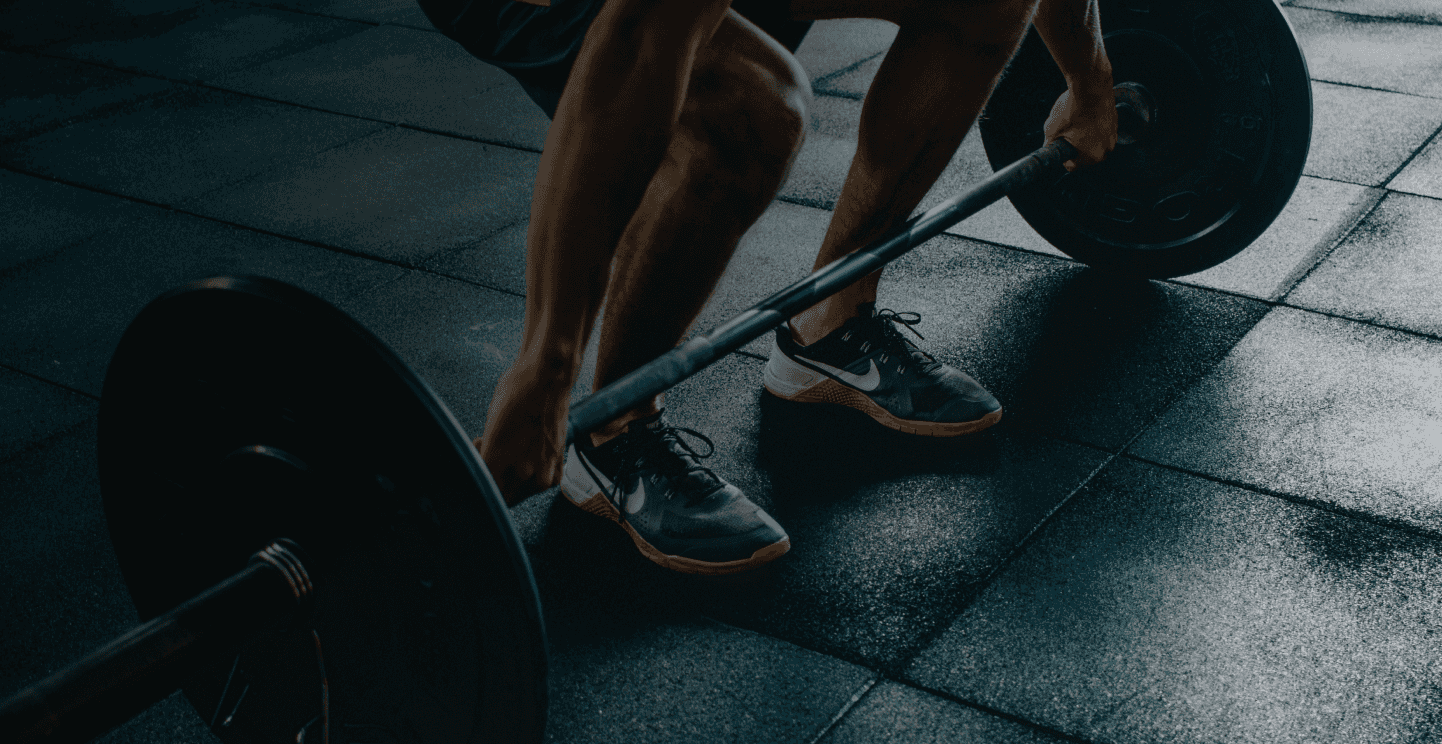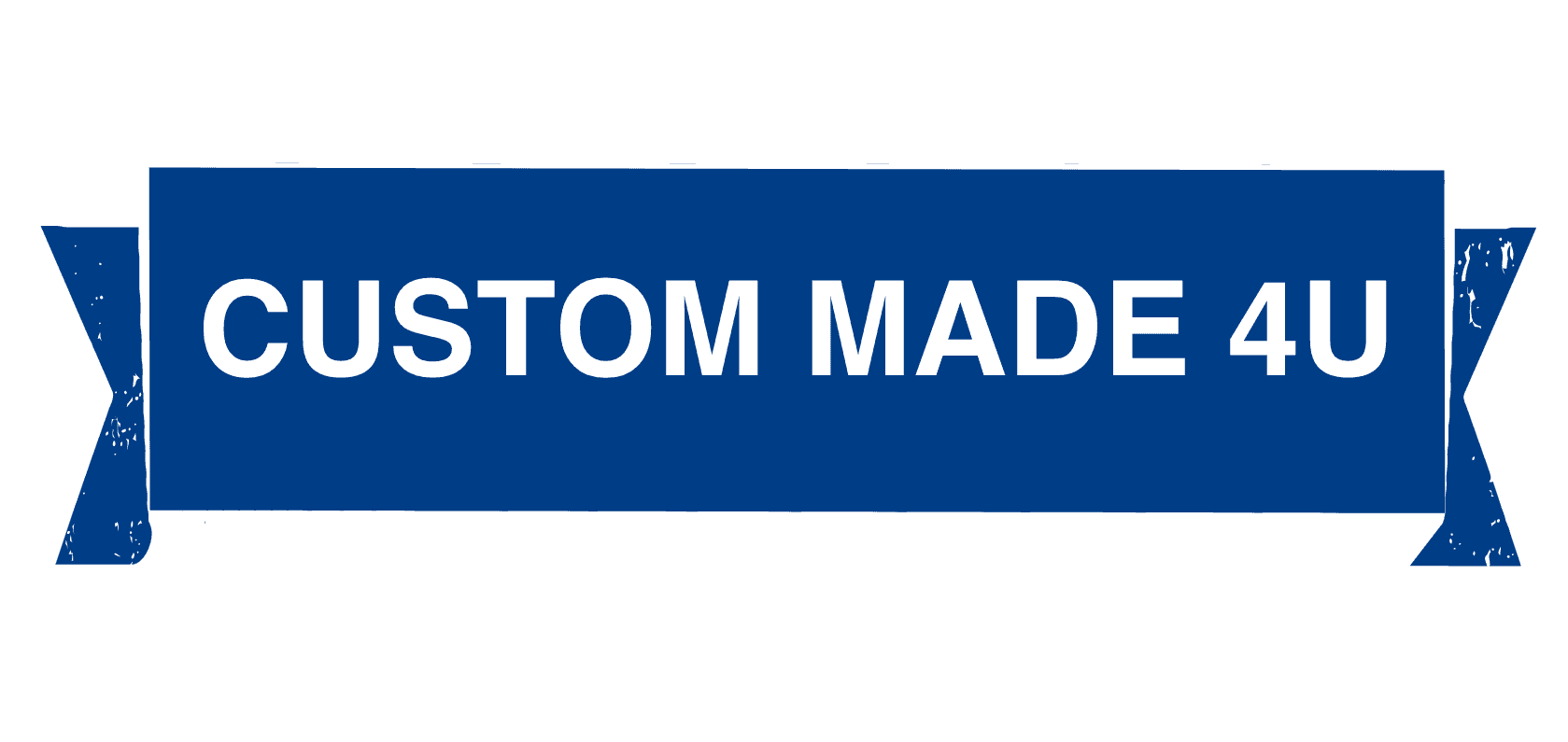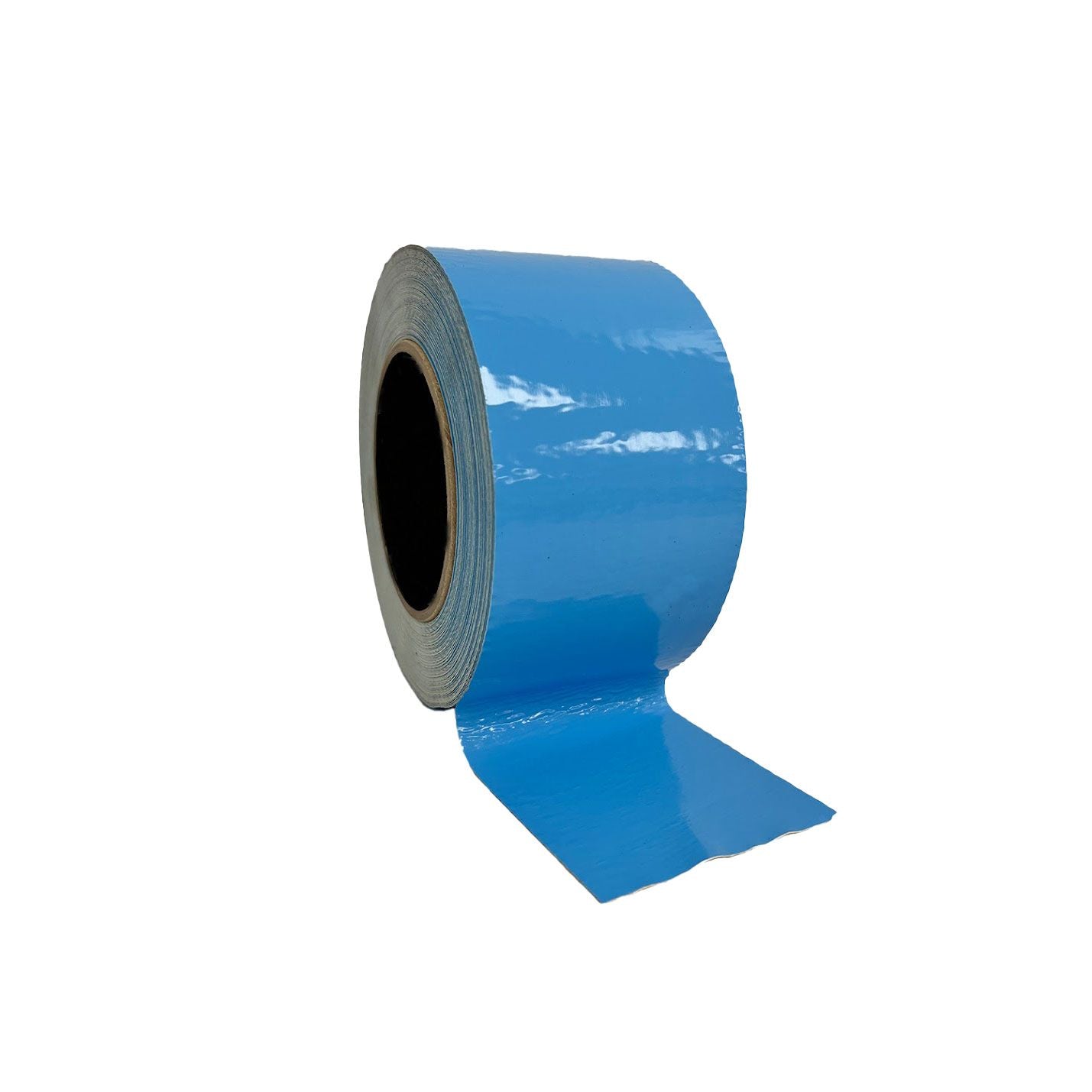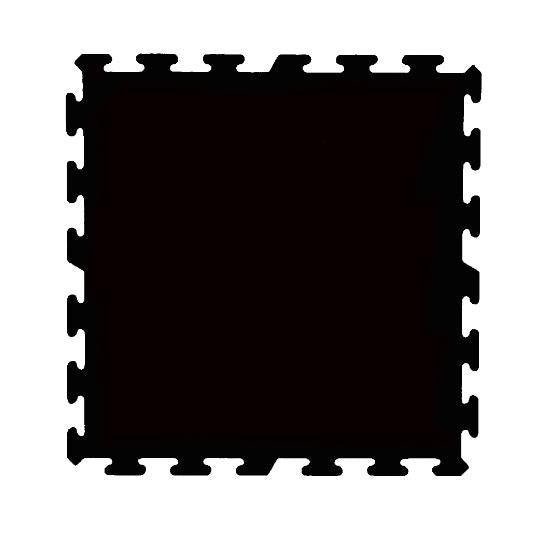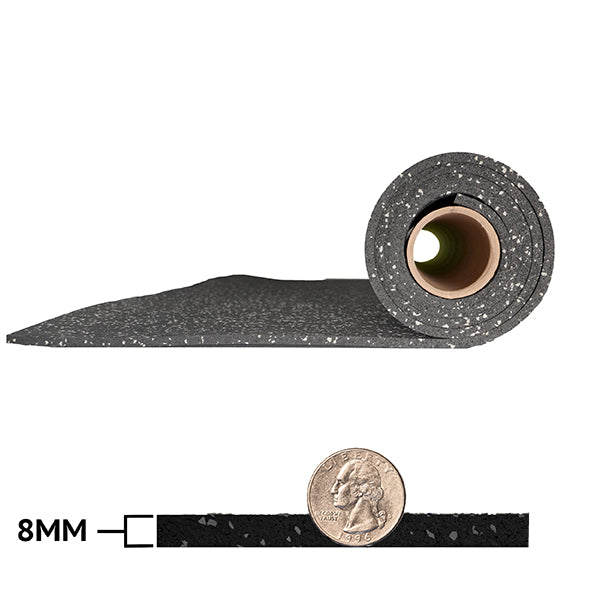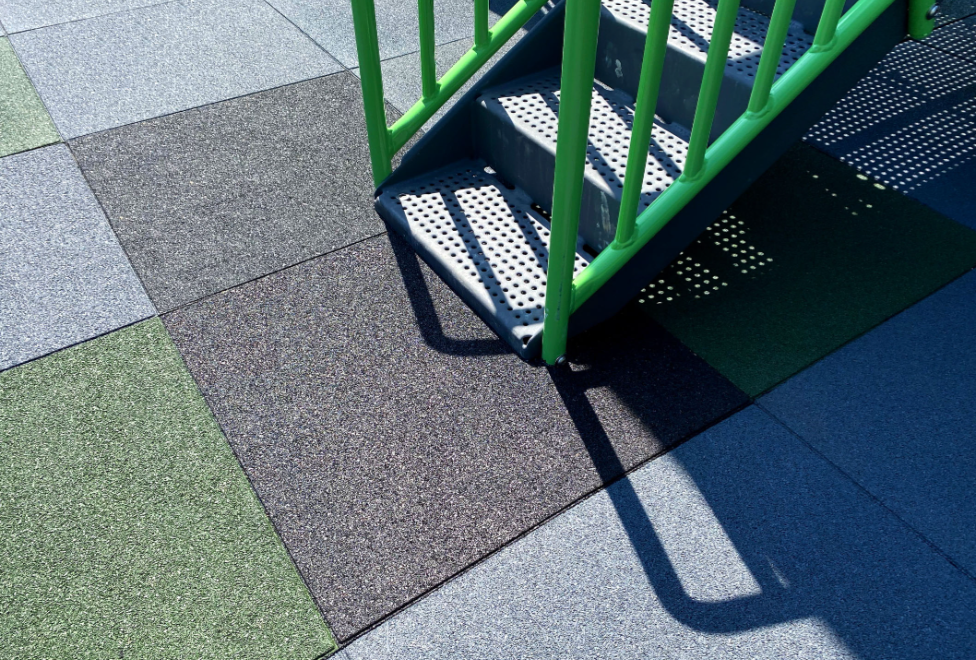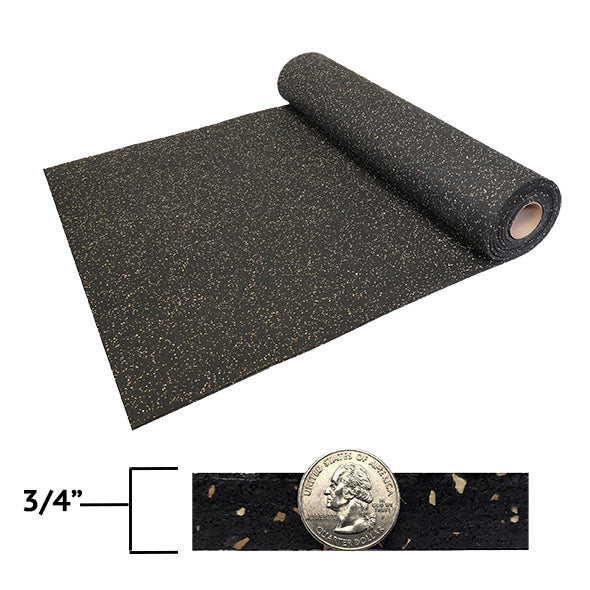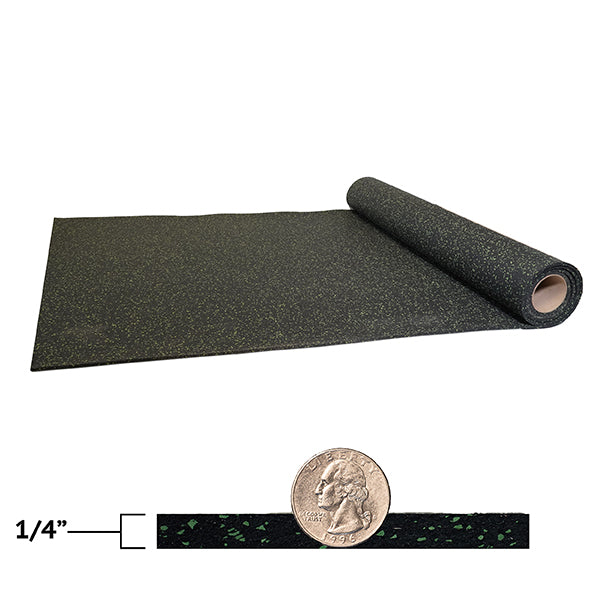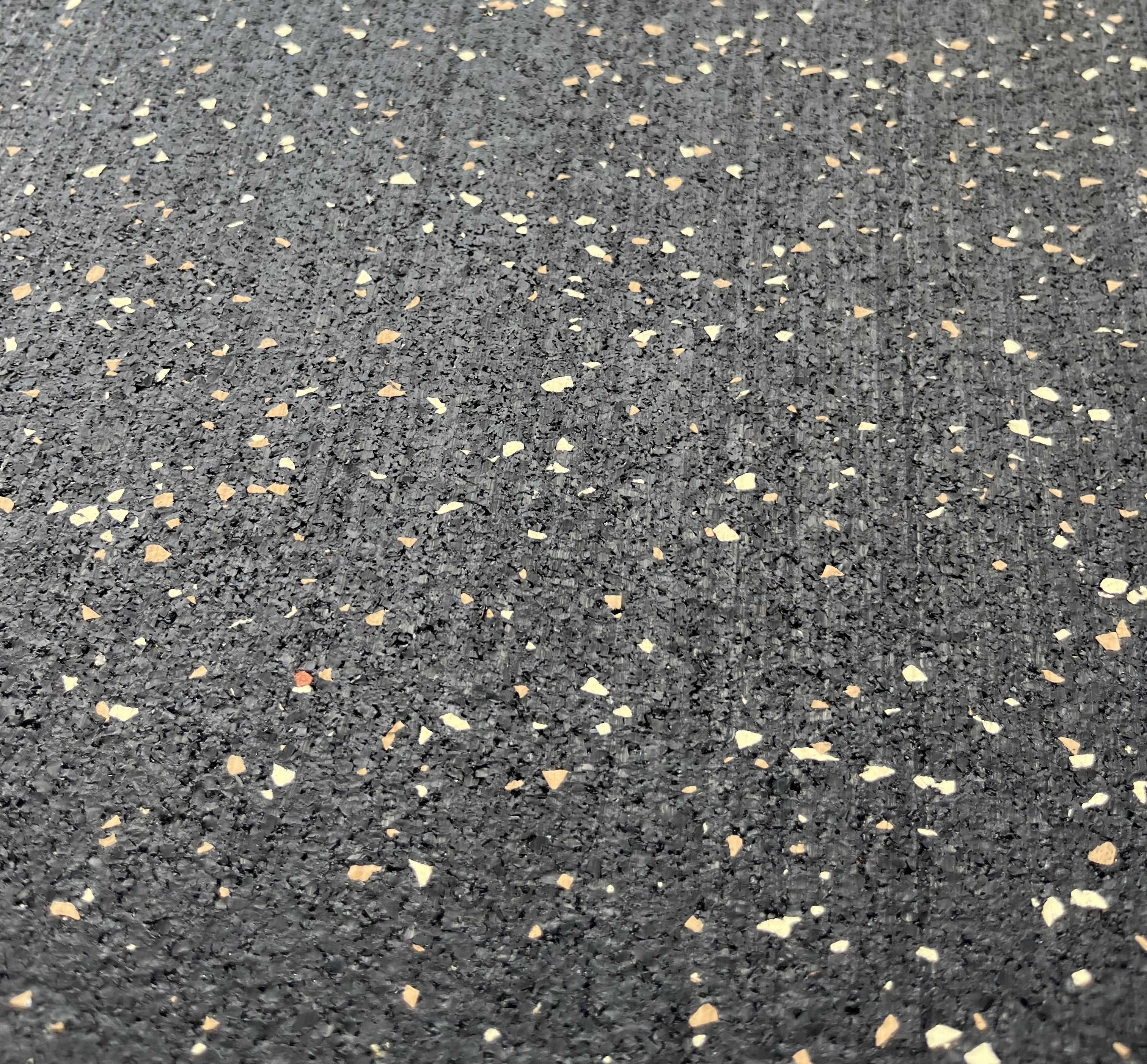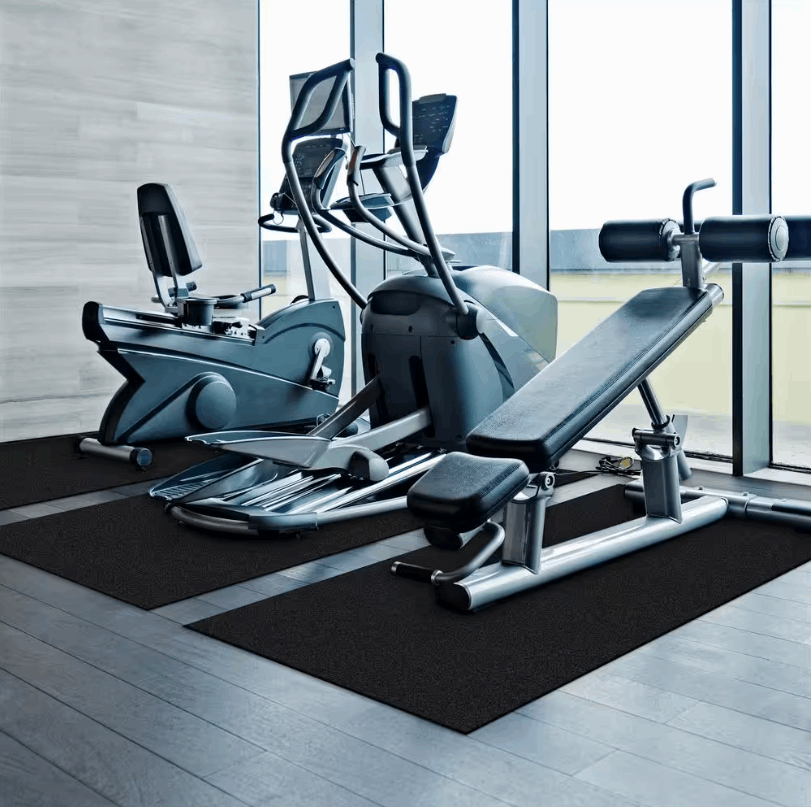Installation Accessories
Product Details
***SOLD AS IS - ALL SALES FINAL - NO RETURNS***
Our 4'x6' Mats - Irregulars are a cost-effective solution for your flooring needs. Made with industry-leading materials, these mats may have minor imperfections such as blade marks, out-of-tolerance width or length, color discrepancies, rough edges, or discoloration, but they provide the same functionality as our regular mats. Get the same quality at a discounted price. Learn more about our affordable gym flooring.
***IMAGES DON'T SHOW ALL POSSIBLE IMPERFECTIONS OR COLOR DISCREPANCIES***
Tech Specs:
- Thickness:1/4" (6mm), 8mm, 3/8" (9mm), and 1/2" (12mm)
- Weight:1/4" ~ 39 lbs/mat, 8mm ~ 46 lbs/mat, 3/8" ~ 53 lbs/mat, and 1/2" ~ 72 lbs/mat
- Sizes:4'x6'
- Lead Times:Orders ship out in ~ 1 week or less. Orders over 2000 sqft may take a little longer.
- Origin: Made in the USA, By USA Employees.
- Disclaimer:Actual color may vary slightly from on-screen representation and samples. Standard Mats have a potential variance in length of +/- 1" and width of -0" + 3/4". PrecisionCut Mats are recommended for multi-mat installs.
Maintenance
One of the best things about using recycled rubber is that maintenance is extremely easy! Simply sweep or vacuum any loose dirt off and the occasional damp mopping with a mild cleaning solvent is all you would need. Do not use any oil-based solvents or cleaners.
Best Sellers
Featured Deals
FAQ's
Rubber flooring is known for its durability, making it a popular choice for a variety of commercial and residential applications. The durability of rubber flooring can vary depending on several factors such as the quality of the rubber, the thickness of the material, and the type of environment it is installed in. Generally speaking, rubber flooring is highly durable and can withstand heavy foot traffic, abrasions, impacts, and moisture. It is also resistant to stains, chemicals, and UV rays, which can help prolong its lifespan. Additionally, rubber flooring can provide a slip-resistant surface, making it a safe choice for areas that are prone to slips and falls. Overall, the durability of rubber flooring makes it a reliable and long-lasting choice for many applications, including home gyms, playgrounds, and commercial kitchens. However, it's important to note that proper installation and regular maintenance can also play a role in ensuring the longevity of the flooring.
Yes, rubber gym flooring is generally water-resistant or waterproof, depending on the type of rubber flooring used. Most rubber gym flooring is made from a non-porous material, which means that it is highly resistant to water and moisture. This is especially important in a gym setting, where there may be a lot of sweat, spilled water, or other liquids. The water-resistant nature of rubber gym flooring helps prevent water from seeping into the subfloor or causing damage to the flooring itself. However, it's important to note that while rubber gym flooring is water-resistant, it is not completely waterproof. In the event of a flood or large spill, water can still penetrate the flooring and cause damage to the subfloor or the flooring itself. Therefore, it's important to clean up any spills or excess water as soon as possible and ensure that the flooring is properly installed to minimize the risk of water damage.
Rubber flooring is a versatile and durable flooring option that can be used in a variety of settings. Some common places where rubber flooring can be used include:
- Gyms and fitness centers: Rubber flooring is a popular choice for gym and fitness center flooring due to its durability, slip-resistance, and ability to absorb shock.
- Playgrounds: Rubber flooring can be used as a safe surface material for playgrounds, providing a cushioned surface for children to play on and reducing the risk of injuries from falls.
- Kitchens and food prep areas: Rubber flooring is a popular choice for commercial kitchens due to its slip-resistant properties and resistance to grease and oil.
- Industrial settings: Rubber flooring is a popular choice for industrial settings due to its durability and resistance to chemicals and heavy equipment.
- Retail spaces: Rubber flooring can be used in retail spaces to provide a durable and slip-resistant surface that can handle high foot traffic.
- Animal care facilities: Rubber flooring is often used in animal care facilities such as veterinary clinics and as a stall mat for horses due to its durability and easy-to-clean properties.
Overall, rubber flooring can be used in a wide variety of settings where durability, slip resistance, and easy maintenance are important considerations. Plus, the install often only requires a utility knife and some glue.
Rubber gym mats are a versatile and durable flooring option that can be used in a variety of settings. Some common places where rubber gym mats can be used include: Home gyms: Rubber gym mats can be used in home gyms to provide a slip-resistant and shock-absorbing surface for exercising. Commercial gyms: Rubber gym mats are a popular choice for commercial gyms due to their durability, slip-resistance, and ability to absorb shock. Yoga and Pilates studios: Rubber gym mats can provide a cushioned surface for yoga and Pilates exercises, reducing the impact on joints and providing a non-slip surface. CrossFit and weightlifting facilities: Rubber gym mats can help protect floors from heavy equipment and provide a slip-resistant surface for lifting. Physical therapy and rehabilitation centers: Rubber gym mats can be used in physical therapy and rehabilitation settings to provide a cushioned surface for exercises and to reduce the risk of slips and falls. Overall, rubber gym mats can be used in a wide variety of settings where durability, slip resistance, and shock absorption are important considerations.
The method for cleaning home gym flooring will depend on the type of flooring used. Here are some general cleaning tips for different types of home gym flooring: Rubber flooring: Rubber flooring can be easily cleaned with a mixture of mild detergent and warm water. Use a soft-bristled brush or mop to clean the surface and rinse thoroughly with water. Avoid using harsh chemicals or abrasive scrubbers, as they can damage the surface. Foam flooring: Foam flooring can be cleaned with a mild detergent and warm water solution. Use a soft-bristled brush or mop to clean the surface and rinse thoroughly with water. Avoid using harsh chemicals or abrasive scrubbers, as they can damage the surface. Vinyl flooring: Vinyl flooring can be cleaned with a mild detergent and warm water solution. Use a soft-bristled brush or mop to clean the surface and rinse thoroughly with water. Avoid using abrasive scrubbers or harsh chemicals, as they can damage the surface. Carpet tiles: Carpet tiles can be vacuumed regularly to remove dirt and debris. For more thorough cleaning, use a carpet cleaner or spot cleaner to remove stains and spills. It's important to clean home gym flooring regularly to prevent the buildup of dirt, sweat, and bacteria, which can damage the flooring over time. Always follow the manufacturer's recommendations for cleaning and maintenance to ensure the longevity of your home gym flooring.
The frequency of cleaning gym mats will depend on the amount of use and the type of exercises performed on them. However, in general, it is recommended to clean gym mats at least once a week or more often if they are heavily used or exposed to moisture, sweat, or other contaminants. If gym mats are used frequently or by multiple people, they should be cleaned and disinfected more often to prevent the buildup of bacteria and other harmful pathogens. Mats that are used in areas that are prone to spills or moisture, such as near water fountains or in a sauna, should be cleaned and dried after each use to prevent the growth of mold and mildew. It's important to follow the manufacturer's recommendations for cleaning and maintenance to ensure the longevity of gym mats. Regular cleaning and maintenance can also help prevent the accumulation of dirt, sweat, and bacteria, which can cause odors and lead to the breakdown of the mat over time.
The best exercise flooring to use in a room depends on several factors, such as the type of exercises performed, the equipment used, and personal preference. Here are some popular options for exercise flooring: Rubber flooring: Rubber flooring is a durable and versatile option that is suitable for a variety of exercises. It provides a slip-resistant surface and is excellent for shock absorption, which is especially useful for high-impact exercises or when using heavy equipment. Foam flooring: Foam flooring is a lightweight and budget-friendly option that provides a cushioned surface for low-impact exercises. It is ideal for yoga, Pilates, and other floor-based exercises. Vinyl flooring: Vinyl flooring is a cost-effective and easy-to-maintain option for exercise rooms. It provides a slip-resistant surface and is available in a variety of colors and patterns. Carpet tiles: Carpet tiles can provide a comfortable and slip-resistant surface for exercise rooms. They are available in a variety of colors and patterns and can be easily replaced if damaged. When choosing the best exercise flooring for a room, it's important to consider factors such as durability, slip resistance, shock absorption, ease of maintenance, and overall cost-effectiveness. It's also recommended to consult with a professional or manufacturer to ensure that the chosen flooring is suitable for the intended use.
The size of a gym mat will depend on the type of exercises performed, the equipment used, and the available space in the gym. Gym mats come in a variety of sizes and shapes, including rectangular, square, and interlocking tiles. Here are some general guidelines for choosing the size of a gym mat: Consider the exercises: If the gym mat is intended for floor exercises, such as yoga or Pilates, a larger mat may be preferable to provide more space. If the gym mat is intended for weightlifting or other equipment, a smaller mat may be sufficient. Check equipment dimensions: If the gym mat is intended to be used under equipment, such as a treadmill or weight bench, check the equipment dimensions and choose a mat size that is larger than the equipment footprint. Measure the available space: Measure the available space in the gym and choose a mat size that fits comfortably in the area. Make sure to leave enough space around the mat to allow for movement and other exercises. Consider the mat thickness: The thickness of the mat can also impact the size. Thicker mats may be larger and heavier than thinner mats. Overall, the size of a gym mat will depend on the intended use, equipment used, and available space. It's important to choose a size that provides enough space for exercises and equipment while also fitting comfortably in the gym area.
Gym mats are typically made from a variety of materials, depending on the intended use and specific requirements of the gym. Some common materials used in gym mats include: Rubber: Rubber is a popular material for gym mats due to its durability, slip resistance, and shock absorption. It is often used for weightlifting, cross-training, and other high-impact exercises. Foam: Foam is a lightweight and inexpensive material that is often used for gym mats. It provides a cushioned surface for low-impact exercises such as yoga or Pilates. Vinyl: Vinyl is a cost-effective and easy-to-maintain material that is often used for gym mats. It provides a slip-resistant surface and is available in a variety of colors and patterns. Carpet: Carpet is a comfortable and slip-resistant material that is sometimes used for gym mats. It provides a cushioned surface for low-impact exercises. PVC: PVC (polyvinyl chloride) is a durable and easy-to-clean material that is sometimes used for gym mats. It provides a slip-resistant surface and is often used for high-traffic areas. Overall, gym mats can be made from a variety of materials depending on the intended use and specific requirements of the gym. It's important to choose materials that are durable, slip-resistant, and provide adequate shock absorption for the types of exercises performed.
Cleaning commercial rubber gym flooring is an important part of gym maintenance to ensure a clean and healthy workout environment. Here are some general steps to clean commercial rubber gym flooring: Remove debris: Before cleaning the gym floor, sweep or vacuum the area to remove any loose debris or dirt. Prepare cleaning solution: Prepare a cleaning solution by mixing a mild detergent or commercial gym floor cleaner with warm water. Mop the floor: Using a mop or scrubber, apply the cleaning solution to the gym floor and scrub the surface to remove dirt and grime. Be sure to pay special attention to high-traffic areas, such as near equipment and workout areas. Rinse the floor: Once the floor has been scrubbed, rinse the area thoroughly with clean water to remove any remaining cleaning solution or residue. Dry the floor: Use a dry mop or towel to dry the gym floor completely. Avoid leaving any standing water on the floor, as this can lead to mold or mildew growth. Apply a protective coating: Once the gym floor is clean and dry, consider applying a protective coating to help protect the surface and extend the life of the gym flooring. It's important to follow the manufacturer's recommendations for cleaning and maintenance to ensure the longevity of commercial rubber gym flooring. Regular cleaning can also help prevent the buildup of dirt, sweat, and bacteria, which can cause odors and lead to the breakdown of the flooring over time.
Yes, it is possible to install gym flooring over carpet, but it depends on the type of gym flooring being used and the condition of the carpet. Here are some things to consider: Type of gym flooring: Some types of gym flooring, such as interlocking rubber tiles, can be installed directly over the carpet. Other types of flooring, such as foam or vinyl, may require a smooth, hard surface to ensure a secure fit. Condition of the carpet: The carpet should be in good condition, with no bumps or lumps that could cause the gym flooring to shift or buckle. If the carpet is old or worn, it may need to be replaced before installing gym flooring. Proper subflooring: If installing gym flooring over carpet, it's recommended to use a proper subflooring material, such as plywood or OSB board, to ensure a stable and level surface for the gym flooring. Weight of gym equipment: It's important to consider the weight of gym equipment that will be placed on top of the gym flooring. Heavy equipment can cause the gym flooring to shift or damage the carpet underneath. Overall, installing gym flooring over carpet is possible but requires careful consideration of the type of flooring being used and the condition of the carpet. It's recommended to consult with a professional or the manufacturer to ensure that the chosen gym flooring is suitable for installation over the carpet and to ensure proper installation for safety and performance.
Cutting rubber gym mats and tiles can be a straightforward process with the right tools and techniques. Here are some general steps for cutting rubber gym mats and tiles: Measure and mark: Use a straight edge and a pencil to mark the area of the rubber gym mat or tile that needs to be cut. Prepare cutting tools: Use a sharp utility knife or heavy-duty scissors to cut the rubber gym mat or tile. Make sure the blade is sharp and in good condition before beginning to cut. Apply pressure: Apply firm pressure to the cutting tool, and slowly and carefully score the rubber surface along the marked line. Repeat the process several times until the rubber is deeply scored. Cut along the scored line: Use the cutting tool to make a clean, straight cut along the scored line. Avoid cutting too quickly or applying too much pressure, as this can cause the rubber to tear or become jagged. Smooth edges: Use sandpaper or a utility knife to smooth any rough edges or imperfections along the cut line. When cutting rubber gym mats and tiles, it's important to work carefully and wear protective gloves to prevent injury. It's also recommended to test the cutting tool on a small section of the rubber gym mat or tile to ensure that it cuts cleanly and effectively.
Using a rubber mat or rubber tile under a weight bench can provide several benefits, including protection for the floor, better shock absorption, and noise reduction. Here are some reasons why you might consider using a rubber mat or rubber tile under a weight bench: Protect the floor: Using a rubber mat or tile can help protect the floor from scratches, scuffs, and other damage that can be caused by heavy weightlifting equipment. Better shock absorption: Rubber mats and tiles provide better shock absorption than hard flooring, which can help reduce the impact of dropped weights and protect the equipment from damage. Noise reduction: Rubber mats and tiles can help reduce noise and vibration caused by heavy equipment and weights, which can be beneficial in shared living spaces or apartment complexes. Improved stability: Rubber mats and tiles provide a stable surface for weightlifting equipment, which can help prevent slipping or shifting during workouts. Overall, using a rubber mat or rubber tile under a weight bench is not required, but it can provide several benefits. It's recommended to consult with a professional or manufacturer to ensure that the chosen rubber mat or tile is suitable for the intended use and meets safety and performance standards.
